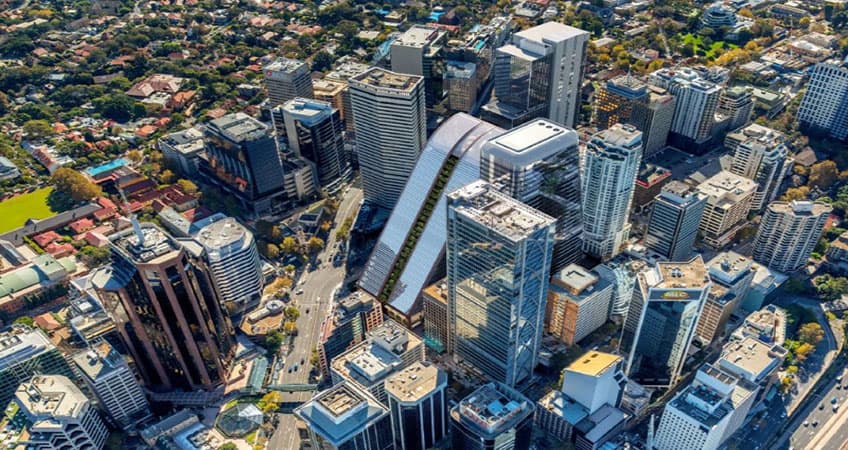
Building in 2020: New office tower in Sydney would respond to a changing climate and COVID-19
PLANS have been submitted for a USD $350M new office tower in North Sydney.
If approved the scheme would add to the slate of large scale construction projects Australian state governments have been fast-tracking in an effort to boost the country's economy in the wake of COVID-19.
105 Miller Street is a 27-storey commercial building designed by architecture firm Bates Smart. The tower is inspired by well-known London buildings - including the Gherkin and Walkie Talkie - to create a distinctive shape on the North Sydney skyline.

Above: 105 Miller Street takes inspiration from London's sculptural buildings.
The structure would be North Sydney’s first net zero commercial building and will have a 6 Star Green Star office design rating, as well as a 5.5-Star NABERS Energy Rating.
Its ramp-like shape would also help manage heat gains during Australia's warm summers while providing natural light, ventilation and spectacular views of the city.

Above: The ramp-like design increases natural light and ventilation (image courtesy of Bates Smart).
The building could add 74,000 square metres of net lettable area to the city, while around half of the site would be completely dedicated to public amenities - such as civic and community areas, car parks and space for 802 bicycles.
The tower would be erected within a cluster of new high rise buildings which includes the recently approved Victoria Cross Metro Station. Proximity to this new transport hub is expected to be a major draw for new tenants and the talent they seek.

Above: Half the building will be given over to public amenities (image courtesy of Bates Smart).
The tower is also uniquely designed in response to the COVID-19 pandemic.
The design team established a dedicated group to seek out workplace innovations and products that would suit the quickly shifting needs of the commercial office space post-2020.
In response, the building has incorporated a number of Coronavirus-aware technologies, including contactless entry at the base level, touchless doors and bathroom facilities, as well as the ability to real-time track the number of occupants.
The project is expected to create 1,700 jobs during construction and 6,200 jobs once finished and fully occupied.








